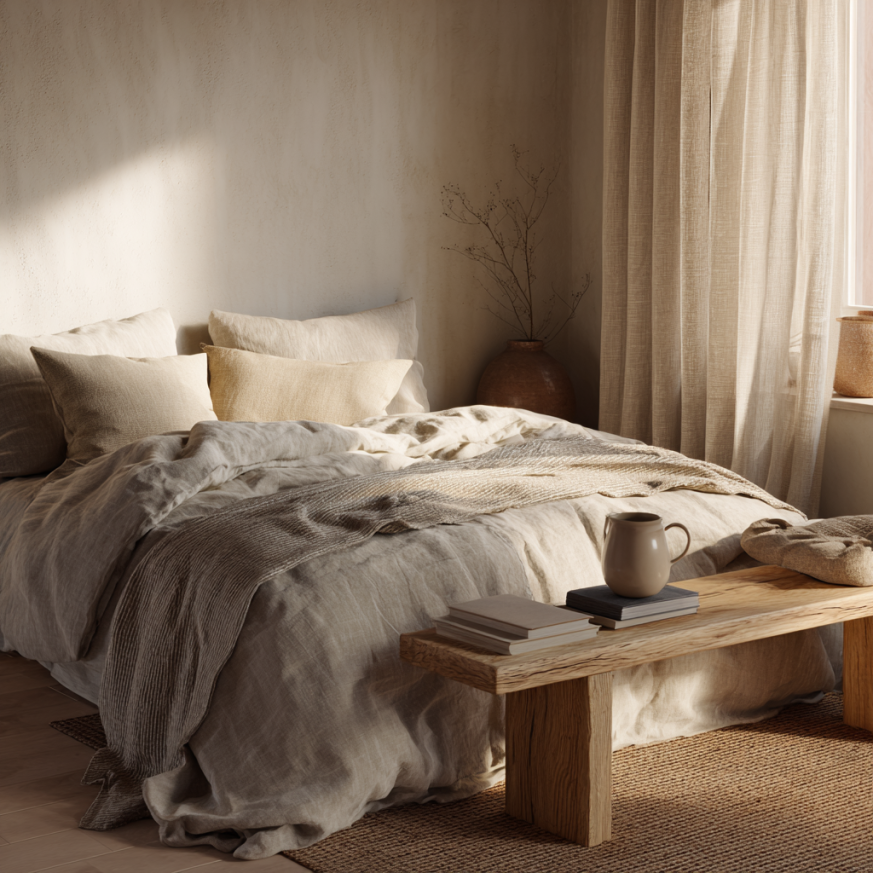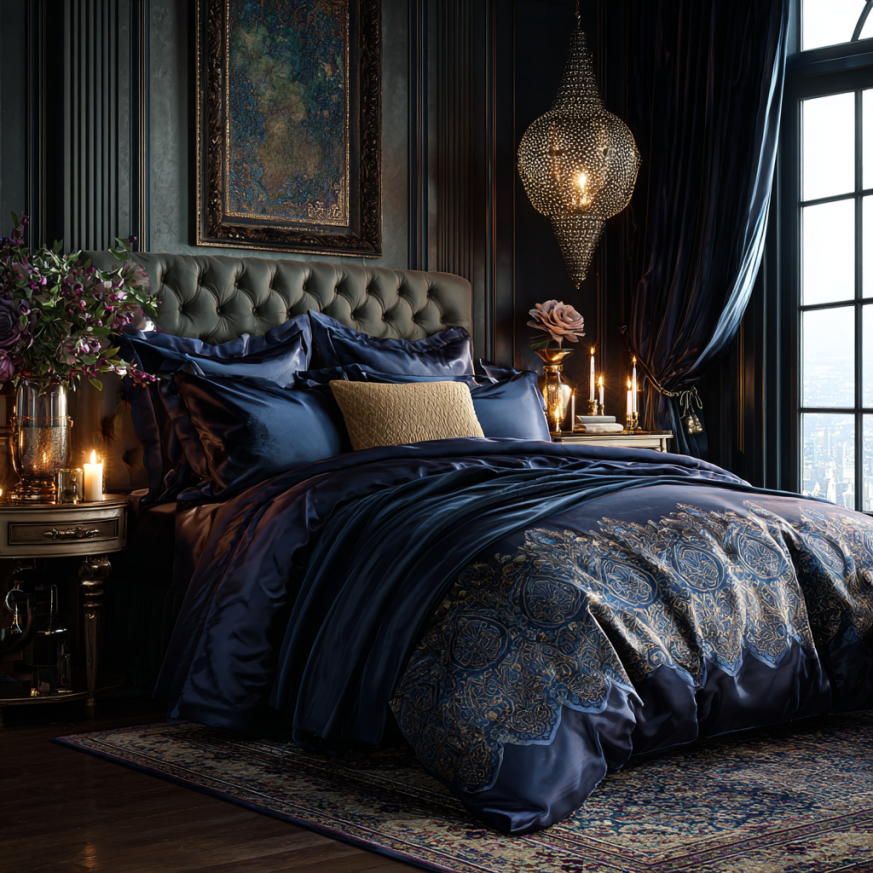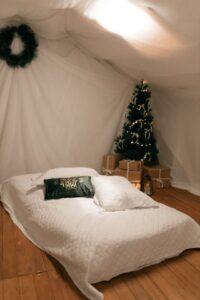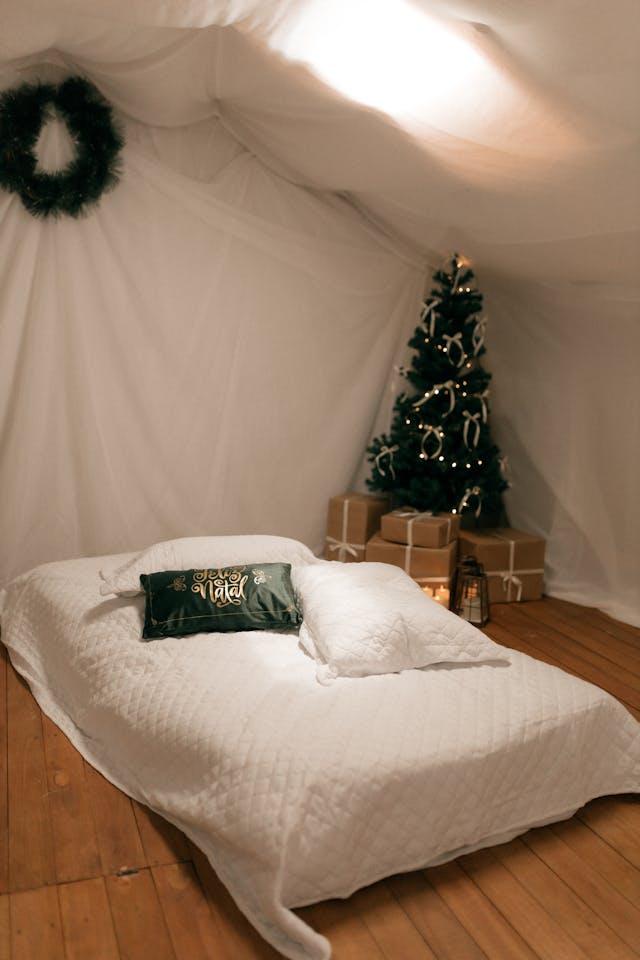Bedding Sets and Materials
When considering bedding sets and materials,
Choosing the right bedding set means more than just picking a pretty pattern. The materials you sleep on every night affect your comfort, temperature, and even your skin. In this guide, we compare the most popular bedding materials—cotton, linen, bamboo, and more—so you can build the coziest sleep setup possible.
Think of your bedding as your body’s nighttime wardrobe. It’s what touches your skin for 6 to 8 hours a night, so comfort and breathability truly matter. Whether you’re craving soft, crisp, breathable, or eco-friendly options, the right bedding sets and materials can transform your sleep into something magical. For additional insights, check out the Sleep Foundation.
Why Bedding Materials Matter
When it comes to bedding sets and materials, the type of fabric you choose can seriously upgrade (or ruin) your sleep experience. Imagine slipping into breathable cotton on a summer night or cozying up with temperature-regulating bamboo during the winter. Each material interacts differently with your body, so it’s not just about looks—it’s about sleep science.
Here’s why the material matters:
- Breathability: Natural fibers like cotton and linen allow air to flow freely, helping regulate your temperature as you sleep.
- Skin sensitivity: Materials like bamboo and organic cotton are gentle on sensitive skin and hypoallergenic.
- Longevity: High-quality fabrics tend to last longer, resist pilling, and get softer with time—making them a smarter investment in the long run.

When considering bedding sets and materials,
Your bedding isn’t just decoration—it’s your nightly sleep partner. Choose wisely, and you’ll feel the difference every morning.
Cotton Bedding Sets
When considering bedding sets and materials,
Cotton is the gold standard in bedding for good reason. It’s breathable, easy to care for, and comes in countless styles. You’ll find cotton sheets in nearly every home, from basic twin beds to luxurious king-size retreats.
There are different types of cotton too:
- Egyptian cotton: Known for long fibers that create soft, durable sheets—often considered the luxury choice.
- Organic cotton: Grown without harmful chemicals, making it a great option for eco-conscious or sensitive sleepers.
- Percale vs. sateen: Percale offers a crisp, hotel-like feel, while sateen is smoother and silkier with a subtle sheen.
Pros:
- Breathable and temperature-friendly
- Easy to wash and dry
- Available in every budget and color
Cons:
- Prone to wrinkling
- Cheaper varieties may pill over time

If you’re not sure where to start, cotton bedding sets are always a safe, comfy bet. For expert reviews, visit Eachnight.
Linen Bedding Sets
Linen might just be the cool sleeper’s secret weapon. Made from flax fibers, linen bedding is known for its breathability, moisture-wicking magic, and lived-in texture that only gets better with age. It’s a favorite among minimalist designers and hot sleepers alike.
What makes linen stand out?
- Airflow: Its loose weave helps keep you cool, even on the hottest nights.
- Moisture control: Absorbs moisture without feeling damp—perfect for night sweaters.
- Relaxed aesthetic: Wrinkles? They’re part of the charm. Linen looks great slightly rumpled.
Pros:
- Superior breathability for hot climates or summer months
- Extremely durable and long-lasting
- Gets softer with every wash
Cons:
- Can feel stiff at first (but softens quickly)
- Higher price tag than cotton or microfiber

If you want bedding that feels natural, looks casually elegant, and keeps you cool all night—linen’s the winner. Explore design inspirations at The Spruce.
Bamboo Bedding Sets
Bamboo bedding is ideal for anyone who wants silky softness with sustainability in mind. It’s crafted from bamboo pulp, processed into viscose or lyocell, and then spun into sheets that are naturally cool and hypoallergenic.
Why people love bamboo:
- Temperature regulation: Bamboo fibers help prevent overheating by adjusting to your body temp.
- Hypoallergenic: Resistant to dust mites and bacteria, making it great for allergy sufferers.
- Silky feel: Often compared to cashmere or silk in smoothness—but easier to care for.
Pros:
- Extremely soft and luxurious feel
- Eco-friendly source material
- Gentle on sensitive skin
Cons:
- May require delicate washing cycles
- Quality varies depending on manufacturing process
For a soft, sustainable choice that looks as good as it feels, bamboo sheets are hard to beat.
Other Materials: Microfiber, Silk, and Blends
When considering bedding sets and materials, not all fabrics fall under natural fiber categories. Synthetic and blended options also have their place—especially if you’re watching your budget or prefer low-maintenance linens.
Let’s break them down:
- Microfiber: A synthetic material made from polyester. It’s affordable, wrinkle-resistant, and holds color well—but doesn’t breathe like natural fibers.
- Silk: The luxury pick. Incredibly smooth and great for skin and hair health, silk bedding adds a touch of glam—but needs special care.
- Blends: Cotton/polyester blends or bamboo/viscose mixes combine benefits of durability and softness, often at a better price point.
Pros:
- Great variety of textures and finishes
- Often wrinkle- and stain-resistant
- Budget-friendly and widely available
Cons:
- Microfiber lacks airflow and can feel stuffy
- Silk requires dry cleaning or delicate wash routines

If luxury or affordability is your top priority, these materials offer plenty of options—just know the trade-offs in care and comfort. For designer-approved ideas, visit Architectural Digest.
How to Choose the Right Bedding Sets and Materials
Feeling overwhelmed by all the bedding choices out there? You’re not alone. With so many textures, fibers, and features to consider, it helps to match your bedding to your sleep habits and lifestyle.
- Hot sleeper? Linen or bamboo are your best bets—they wick away moisture and feel cool to the touch.
- Cold at night? Go for sateen cotton or flannel for warmth and coziness.
- Allergies or sensitive skin? Bamboo or organic cotton are naturally hypoallergenic and gentle.
- Busy household? Microfiber and cotton blends are easier to wash and wrinkle-resistant—great for low-fuss living.
And don’t forget your foundation. A great set of sheets can only do so much if your mattress isn’t pulling its weight. Check out our
Types of Mattresses guide to make sure your base layers support your comfort goals. And if you want your bedding to stay fresh longer, don’t skip our tips on
mattress hygiene.

Choosing the right bedding is part art, part science—and it starts with listening to your body. Build your sleep sanctuary around what feels right for you.
Frequently Asked Questions
- What’s the softest bedding material?
- Bamboo and sateen-weave cotton top the charts for softness. Bamboo offers a silky, cool finish, while sateen has a smooth texture that feels like luxury without the high price tag.
- Which material is best for hot sleepers?
- Linen is hands-down the most breathable, making it ideal for summer or hot climates. Bamboo and cotton percale are also excellent choices for staying cool.
- Are bamboo sheets really eco-friendly?
- Yes, when made properly. Bamboo grows quickly without pesticides and uses less water than cotton. Look for certifications like OEKO-TEX or GOTS to ensure your bedding is genuinely sustainable.
- How often should I replace my bedding sets?
- Most high-quality sheets can last 2–5 years depending on use and washing habits. If your sheets are thinning, pilling, or losing their softness—it might be time for an upgrade.























